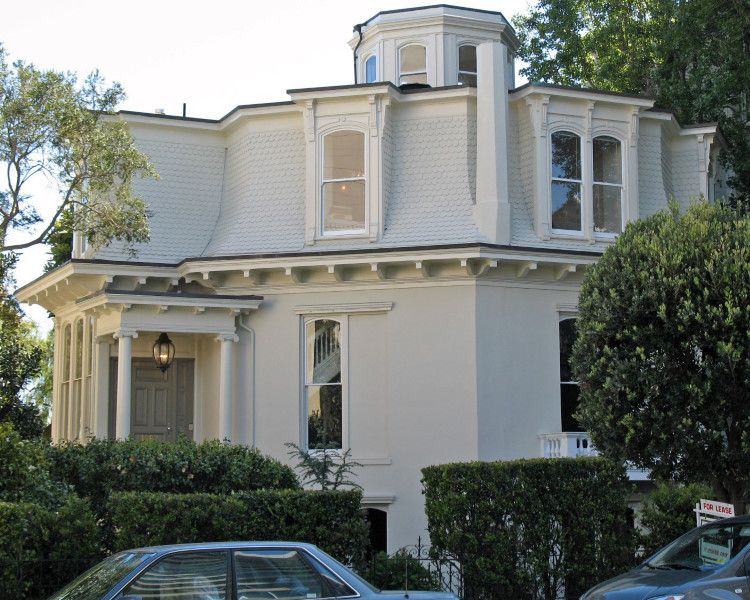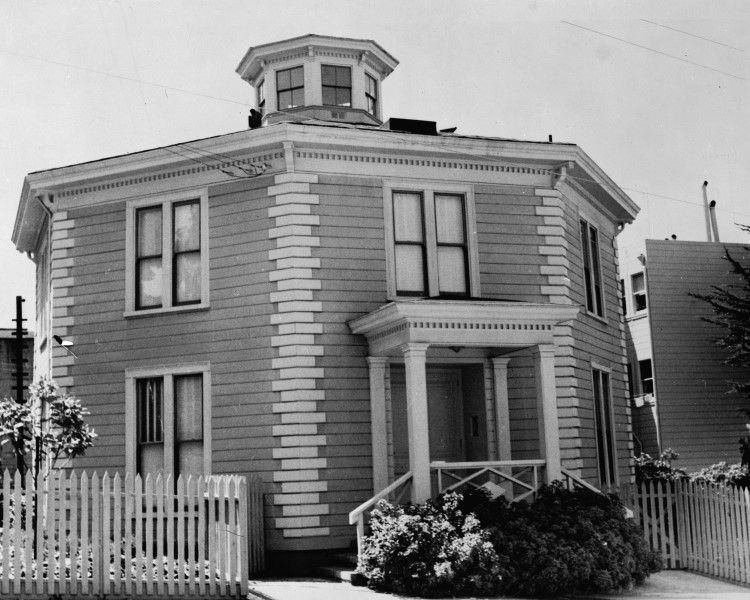All around the world architects use the octagon to beautify their buildings. The Dome of the Rock has a characteristic octagonal plan. The Tower of the Winds in Athens is another example of an octagonal structure. It's no surprise that San Francisco, a city influenced by European ideas and culture, is home to buildings like the Feusier Octagon house, now for sale at $8.6 million.

In the 1850s, the time the property was constructed, octagon houses were in vogue, thanks in large part to the book “A Home for All; Or, The Gravel Wall and Octagon Mode of Building” by Orson Squire Fowler, according to San Francisco’s planning commission.
Fowler argued that eight-sided homes were better for one’s well-being, in part because it meant every room in the house would get sunlight at one point during the day. Similar to studies showing people are generally happier near the sea, the same could be said of those bathed in sunlight throughout the day.
It was last sold to the Billman family for $2.8 million in 1998 and listed unsuccessfully for $5.2 million in 2012. After several years of price cuts, it was offered as rental for a mere $10,500 per month. Now, the Feusier Octagon House on 1067 Green St. in Russian Hill is listed for $8.6 million. If you love sunlight and have relatively deep pockets, take a gander.

Octagon houses are rare. Besides the Feusier House, there are only two others in existence in San Francisco, one of which is the McElroy Octagon House. In 1952 the home was spared from demolition by the National Society of the Colonial Dames of America in California, a group that seeks to preserve historic buildings. PG&E, who owned it, agreed to sell them the home for $1. The house was restored by University of California's former Dean of Architecture, Warren C. Perry. During the restoration, the original layout of the house was changed so the space would be more functional as an event space. By 1953, the building opened as a museum and event space. Though no one lives there now, the McElroy Octagon House still possesses that same old majesty and grit from the old days.

Lastly is the Land's End Octagon House. Also known as the Point Lobos Station, its tenders used to watch the Golden Gate, and signal the arrival and type of incoming ships using visual flag signals. Built in 1927, the little octagon building is now hidden in a batch of trees at Land's End. It was one of three lookout stations at Land's End. Point Lobos replaced an 1889 building, located near the present site of the USS San Francisco Memorial, which was removed to make way for a scenic overlook for tourists.
Though octagon houses are strange and unique, they still seem to hold a small spot of weird in San Francisco's heart of architecture.
Image courtesy of Elisa Rolle
 Best S.F. Realtors
Best S.F. Realtors
 Best SF Property Managers
Best SF Property Managers
 Commercial Real Estate Brokers
Commercial Real Estate Brokers
 Best Rental Realtors
Best Rental Realtors

